DJI Mavic 2 Zoom Review
DJI Mavic 2 Zoom
This 4K drone's optical zoom gives it some impressive trick shots
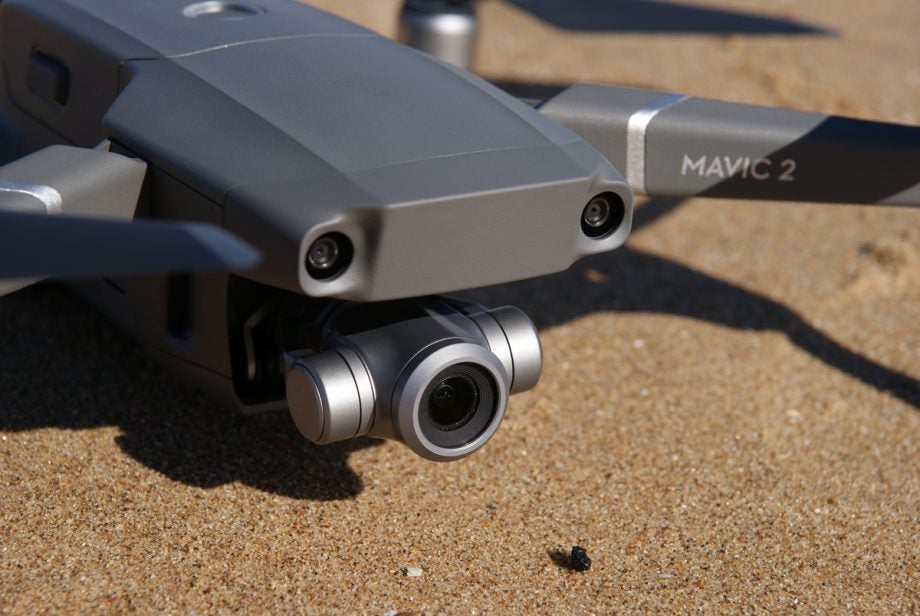
Verdict
Pros
- Great image quality with unusual zoom
- Long battery life
- Fast, stable, quiet flight
- Packed with safety features
- Folding design
Cons
- Mavic 2 Pro image quality is better
Key Specifications
- Review Price: £1099
- 2x optical zoom
- 12-megapixel stills
- Shoots 4K video at 30fps
- 31-minute battery life
- Compact, folding design
What is the DJI Mavic 2 Zoom?
DJI’s Mavic range are like the premium compact cameras of its drone line-up, sitting inbetween the more point-and-shoot Spark and pro-friendly Phantoms. Powerful but small due to their foldable designs, the Mavic fleet recently gained two new flagships that sit above the Mavic Air – there’s the Hasselblad camera-equipped Mavic 2 Pro, and now the Mavic 2 Zoom.
A few hundred pounds cheaper than the Pro, the Zoom is virtually the same drone, with one key difference: it features a different camera – one that comes with a 2x optical zoom lens, which is a first for a foldable drone.
While it lacks the large one-inch sensor, 10-bit HDR video and adjustable aperture of the Pro, this lens gives the Mavic 2 Zoom some unique skills that could make it even more appealing than its sibling, depending on the kind of aerial videos you’re looking to shoot.
Related: Best drones
DJI Mavic 2 Zoom – Design and controller
If you’ve read our DJI Mavic 2 Pro review, you can probably go ahead and skip ahead to the image quality section, because in terms of general design and spec, the Zoom is basically identical.
The overall shape is similar to both the Mavic 2 Pro and original 2016 Mavic Pro: four folding rotor arms, a rear-mounted battery and a front-mounted camera with a three-axis gimbal for in-flight stability.
It’s not as small or lightweight as DJI’s cheaper folding models like the Mavic Air or Spark, but it’s still compact enough to stuff in a small handbag, tote or backpack. We wouldn’t hesitate to pack it when heading off for a hike or day trip, unlike the non-folding DJI Phantom 4, which requires its own bulky carry case.
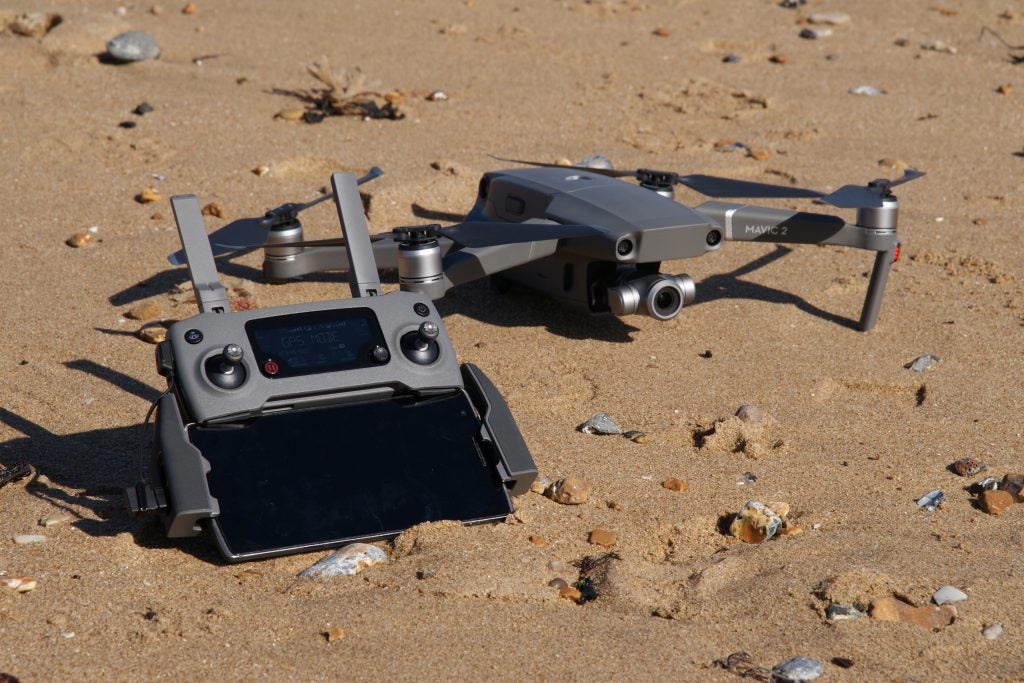
The Zoom comes with 8GB of built-in storage, plus a microSD slot for adding cards up to 128GB in capacity. Footage can be siphoned off to your computer via a USB-C connector, which you can also use also to connect your computer to the drone for supplying firmware updates; these can be downloaded using the DJI Go mobile app and transferred wirelessly too.
Just like the drone, the controller folds down for easy storage – its thumb sticks even twist off and slide into little concealed slots to keep the profile slimmer; when folded, it’s around the size of a sunglasses case. Unfolded, its ‘arms’ can hold a smartphone up to 8.5mm thick and 160mm in length in place, with connectors supplied for Lightning, USB-C and micro USB devices.
Related: UK drone laws explained: where can and can’t I fly my drone?
DJI Mavic 2 Zoom – Features and flight
You’ll need to connect an Android or iOS device running DJI’s companion app to the controller in order to fly the Mavic 2 Zoom. The DJI Go app and OcuSync 2.0 transmission technology feeds a live HD feed from the drone’s camera to your phone screen.
It works well: even when the drone was over 500m away, I found it to be sharp and stable. DJI claims a theoretical control range of 8000m, but you’d have to be a brave reviewer (and one willing to break the law) to test that. In general, though, the impression I get is that this is DJI’s best transmission tech yet, and one of the edges the company maintains over rival drone makers.
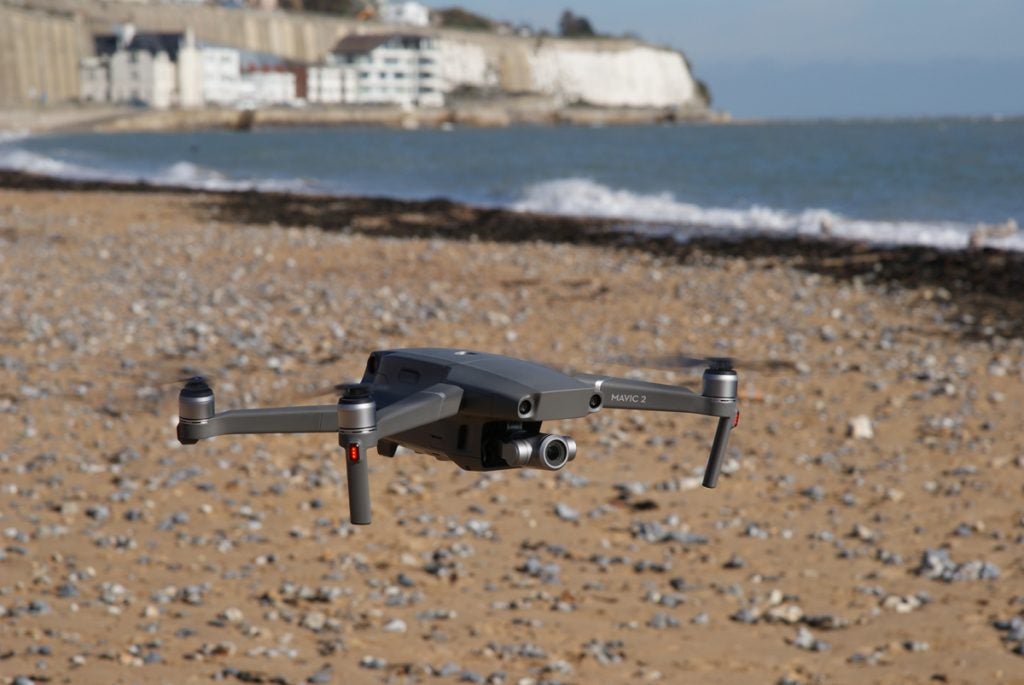
Another is obstacle detection and avoidance. Both Mavic 2 drones have sensors on all sides, making it almost impossible for them to crash; when flying along preset automated routes, the Mavic 2 Zoom will even fly around obstructions either directly in front or behind it before continuing on its way.
Certain flight modes disengage obstacle avoidance, so if you’re whizzing about in sport mode you’ll need to be extra careful, but generally speaking the drone will stop itself before hitting anything, as well as return to home and land itself in the event of a transmission failure or low-battery warning.
The streamlined shape makes it quieter in flight than the original Mavic Pro and possibly even the tiny Mavic Air, and aids both speed (this drone can fly at up to 72km/h, and feels incredibly agile and responsive to control) and battery life.
The Mavic 2 Pro tops out at 31 minutes per charge, longer than any equivalent model available (the Mavic Air manages 18 minutes, the Parrot Anafi 25 minutes) and a duration that removes a lot of the urgency from your flight; there’s a sense here that you’ve got plenty of breathing room and don’t have to rush to get your footage before the warning beeps begin.
Related: Best photo editing apps
DJI Mavic 2 Zoom – Video and photo quality
While the Mavic 2 Pro has a game-changing 20-megapixel, one-inch sensor and adjustable aperture, you won’t find either of these on the Zoom. The Zoom has a 12-megapixel 2/3-inch sensor and, yes, that 2x optical zoom lens. This might not sound like much in these days of 125x zoom cameras like the Nikon P1000, but it has a real impact on your creative options for photo and video.
The 24mm widest field of view is similar what most drone cameras are fixed to, but that tighter 48mm view comes in handy for getting a little closer to subjects that might otherwise endanger the Mavic’s flightworthiness.
[videoai]Where zipping along inches above crashing waves with a Mavic 2 Pro is possible, it’s risky; with the Zoom’s zoom, you can stay a few feet up and get the same frame-filling effect. You can also perform an automated Hitchcockian dolly zoom, where the drone flies backwards but zooms in on your subject while it does so.
General image quality is very good in daylight, too. While the Zoom can’t match the Pro for dynamic range, colour detail and general clarity, it can still capture fantastically sharp, richly detailed 4K, 2.7K and 1080p footage at a range of frame rates, plus 12-megapixel still photos in JPEG or DNG Raw format. The footage can’t match the revelatory quality of the Pros, but it’s worth remembering that the Zoom costs £250 less (at the time of writing).
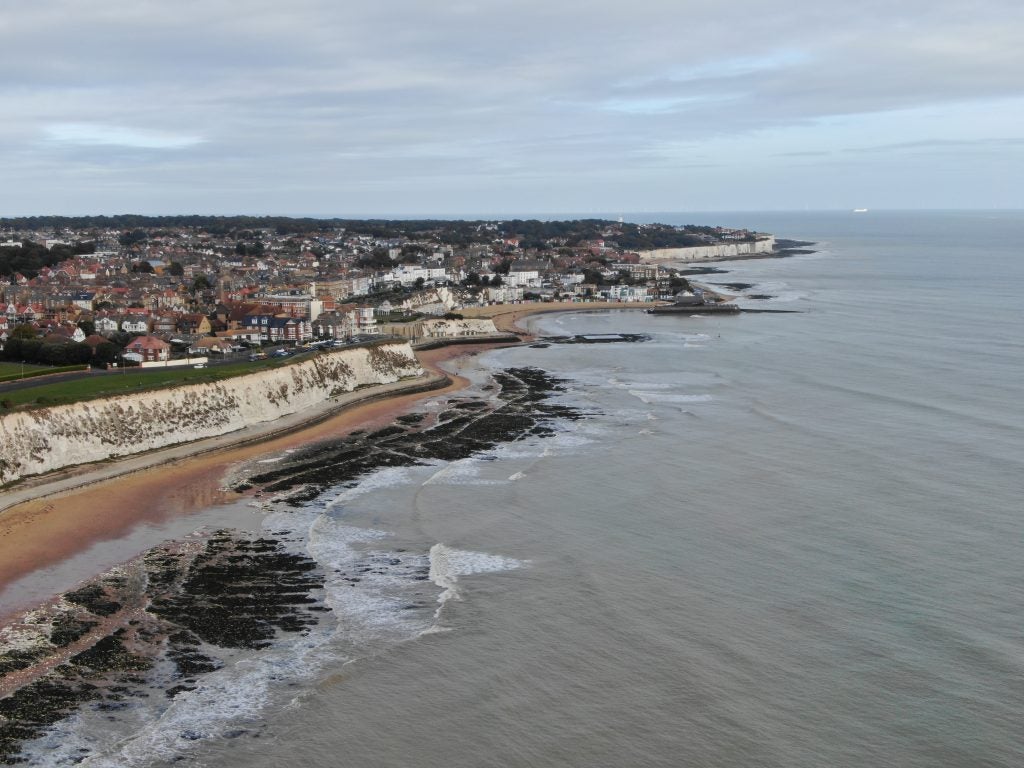
For most users, we suspect the Zoom’s image quality will be sufficient. For professionals or serious enthusiasts, the Pro’s skills will seem well worth the extra outlay; those who’ll be uploading their footage and snaps directly to YouTube or Facebook likely won’t need that added wow factor or the level of editorial control.
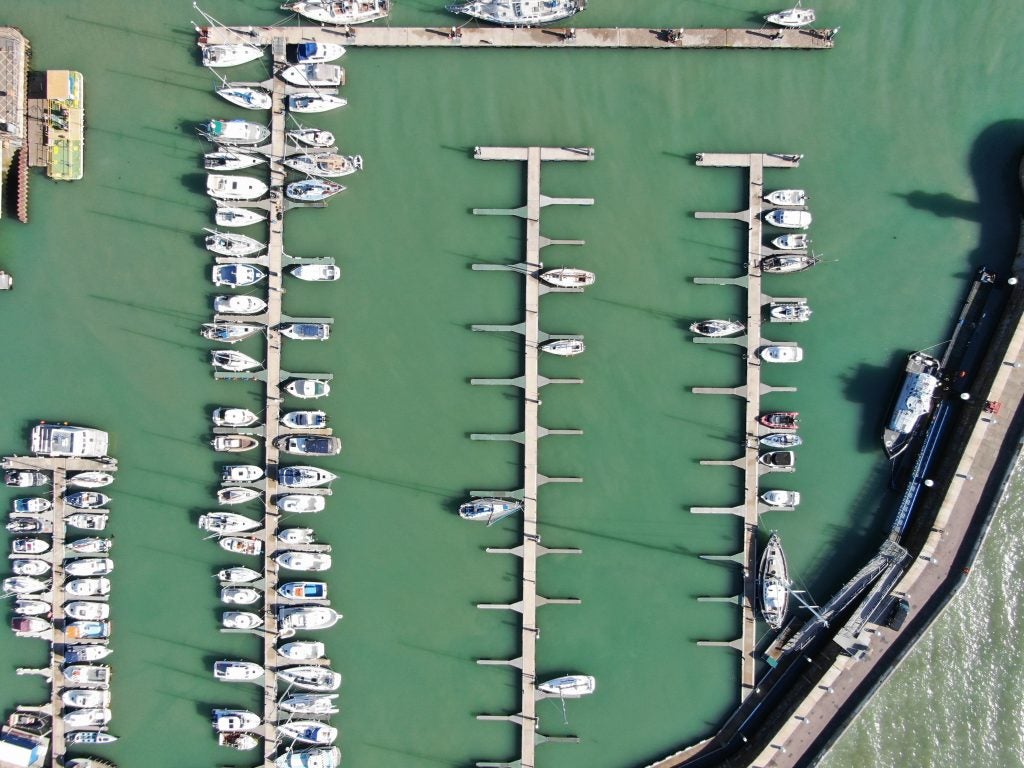
Why buy the DJI Mavic 2 Zoom?
While its videos lack the supreme crispness, dynamic range and rich colour depth of its slightly pricier sibling the Mavic 2 Pro, the Zoom maintains all of the other things that made that drone so appealing: compact design, long battery life, quiet rotors, agile and responsive flight and safety features up the wazoo. Basically, it’s 90% of the best foldable drone out there, with only its image quality falling short of the Pro’s class-leading offering.
While it’ll still set you back over £1,000, it’s quite a bit cheaper than the Pro. This might leave you money to spend on an extra battery, a proper carry case or the like – which, if you don’t really need the Pro’s 10-bit video or low-light skills, might provide more real-world value.
Verdict
Lacks the video wow factor of the Pro model, but still a thoroughly excellent camera drone
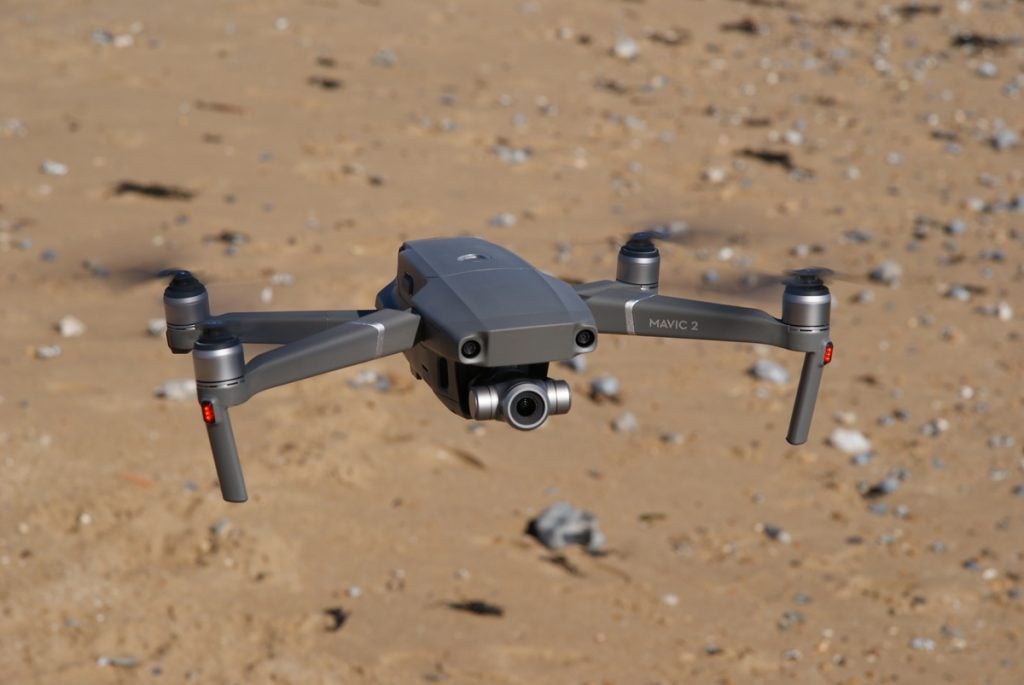
Trusted Score
Features
| Megapixels (Megapixel) | 12 megapixels |
| Optical Zoom (Times) | 2x |
| Image Sensor | 1/2.3-inch CMOS |
| Shutter speed | 8–1/8000s |
Physical Specifications
| Dimensions Width (Millimeter) | 242 |
| Depth (Millimeter) | 84 |
| Length (Millimeter) | 322 |
| Weight (body only) (Kilogram) | 0.905 |

